This month’s featured pose is Utthita Dwipada Vrstasana or Lifted Open-Angle Pose. The name of the pose is derived from the following terms:
Utthita – Raised
Dwi – two / both
pada – foot
asana – pose
This is a challenging arm balance that only a few practitioners attempt to try. With proper guidance and dedicated practice, this deep forward bend and arm balancing pose can be achieved.
Chakra Awareness
Anahata Chakra / Heart
Practice Level
Intermediate
Degree of Difficulty
(100 being most difficult)
80
Movement
Major Movements
Hip Flexion
A movement of bringing the thigh or top of the pelvis forward, decreasing the angle in between.
External Hip Rotation
A movement of turning the thigh or pelvis outward; also known as lateral rotation.
Wrist dorsiflexion
Flexing of the wrist joints wherein the back of the hand moves backwards, towards the lower arm.
Minor movement
Scapular Protraction/Abduction
Moving the scapula away from the midline of the body, having the sensation that the chest muscles are squeezed together.
Challenges faced during the practice
Balance
Hamstrings or hip tightness
Lifting the body off the floor / supporting the body weight
Arm and shoulder strength
As the arms support the body jumpers for sale in this pose, arm and shoulder strength is necessary. Practitioners must keep the arms and shoulders engaged to stabilize the body while in the pose.
Chances of Injury
Falling while in the pose
Pulled Hamstrings
When doing physical activities such as running, kicking, or yoga poses like Urdhva Prasarita Eka Padasana, there is a chance that one of the hamstring muscles will be strained and suddenly stretched, causing the muscle to tear.
Contraindications
Existing upper body or hip issues
Vertigo
Major Muscles Involved
Muscles of the hand, specifically the flexor carpi ulnaris and flexor carpi radialis
The group of muscles in the hand and wrist that allow the extension and flexion of the wrist.
Pectoral
Composed of the Pectoralis Major and Pectoralis Minor, this muscle makes up most of the chest area muscles and is responsible for the movement of the shoulder joint. The Pectoralis Major keeps the arm attached to the trunk of the body while the Pectoralis Minor stabilizes the scapula.
Gluteus
Being one of the strongest muscles of the body, the Gluteus assists in extending the hip and the trunk.
Hamstrings
Located at the back of the thigh, the hamstrings cross and act upon the hips and the knees. It partially controls the knee movement, avoiding any hyperextension of the knees.
Adductor muscle group
This muscle group is made up of different muscles in the hip and thigh area and is responsible for the rotation of the thighs and the alignment of the pelvis and knees.
Iliopsoas
The combination of the iliac and psoas major muscles that make an important part of the hip flexors. Also known as the dorsal or inner thigh hip muscles, the iliopsoas work for the flexion of the hip.
Best Time to Practice
Morning, when the body is refreshed and energized.
………………….
Warm-up
The below warm-up poses address the major muscles involved in coming into Utthita Dwipada Vrstasana.
Spider Pose variation
1. Stand with the feet wider tha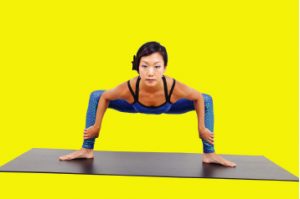 n hip width and toes pointing out diagonally.
n hip width and toes pointing out diagonally.
Bring the hands to the waist.
2. Inhale and on exhale, lower the hips and bend the knees; ideally, the shins are in a straight line, the knee over the ankles.
3. Lean forward and come into a half-forward bend, pushing the hips back. The elbows are aiming for the lower, inner part of the thighs.
4. Hold the shins or the ankles and use the elbows to gently push the thighs outwards. Keep the shoulders at the same level of the hips.
Benefit: Stretches the thigh adductors and hamstrings.
………………….
Baddha Konasana / Bound-angle pose
1. Sit on the floor, bend the knees and bring the bottom of the feet together. Hold the feet firmly.
bring the bottom of the feet together. Hold the feet firmly.
2. Inhale and on exhale, lengthen the torso upwards and lean forward, coming into a forward bend. Use the elbows to gently press against the thighs.
3. Keep the elbows by the sides of the body and aim to bring the chest towards the shins. Keep the neck engaged and gaze forward.
Benefit: Lengthens the inner thigh muscles and strengthens the knees and groin.
………………….
Uttanasana / Standing Forward Bend variation
1. Start in Tadasana or mountain pose 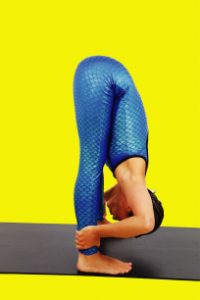 with
with
the hands on the waist.
2. Inhale and on exhale, engage the back of the thighs and lean into a forward bend, aiming to bring the abdomen and chest to the thighs and the hands to the ankles. Keep the body’s weight on the balls of the feet.
3. Hold the ankles and widen the shoulders by opening the elbows to the side. Lengthen the torso downwards and let the neck relax.
Benefit: Stretches the hamstrings, calves and hips and strengthens the thighs and knees.
………………….
Chaturanga Dandasana / Four-limbed Staff pose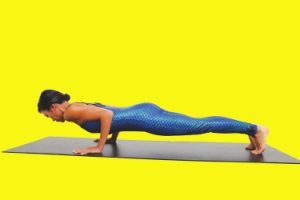
1. From Dandasana or plank pose, shift the body forward so that the shoulders go a little over the wrists.
2. Inhale and on exhale, bend the elbows back and lower the body to the same height as the elbows. Keep the arms to the side of the body.
3. Pull the heels back to distribute some weight to the balls of the feet.
4.Keep the gaze down and engage the abdomen to let the torso centre the body weight.
Benefit: Prepares the shoulders and arms muscles for shoulder protraction and wrist flexion.
………………….
Final Pose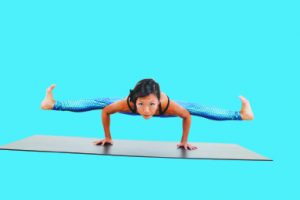
Slowly lower the torso to hip level and straighten the legs sideways. Flex the ankle and point the toes upwards to engage the calf muscles. Keep the gaze forward.
More…
To read the full article please download our Asana Journal App or purchase Issue 166 October 2016.













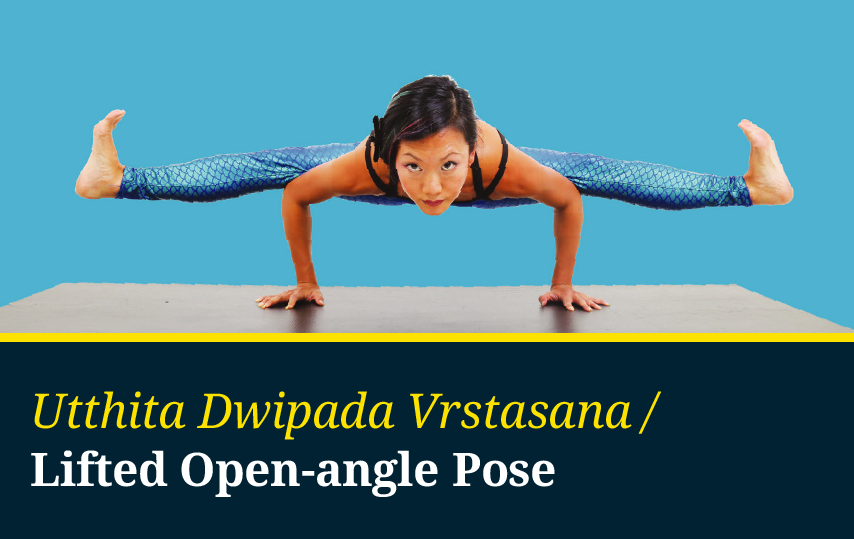





 Other
Other
I am always in search of new techniwues of yoga. Would you kindly and gladly help me sharing your knowledge